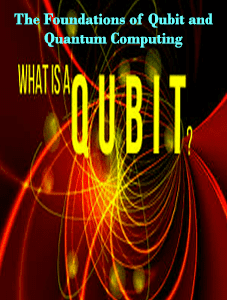Discover the Foundations of Qubit and Quantum Computing
What is a Qubit?
Let's start with the qubit, the
core component of this ground-breaking technology, to comprehend quantum
computing. Quantum computing makes use of qubits, or quantum bits, as opposed
to the classical bits used in conventional computers.
Qubit versus traditional bits
The basic unit of calculation in traditional computing is the bit, which can have one of two values: 0 or 1. This is the binary system that underlies the operation of our computers, where 0 denotes "off" and 1 denotes "on". We now use words like kilobit, megabit, gigabit, etc. to refer to enormous amounts of bits.
The qubit, on the other hand, is
the bit's quantum counterpart. Particles are not just restricted to these two
unique states in the domain of quantum mechanics. A superposition can occur
when they are concurrently in both states. As a result of this superposition,
the qubit can be both 0 and 1.
The Quantum Concept
The Latin word
"quantum," which means "how much," is the source of the word
"quantum." Max Planck, a scientist, first used it to convey the
concept of counting and an unbreakable fundamental grain.
Meaning "How many" From
that point on, counting is associated with quantum. Additionally, we use the
term "quantum" to refer to a unit of matter or energy that cannot be
further subdivided.
How the Qubit works
Thanks to quantum superposition,
the qubit paves the way for tremendously powerful and quick computer
computation. We are able to simultaneously express 2^n values with a vector of
n qubits. This amounts to completing 2^n calculations simultaneously, which is
a capacity that can't be reached with standard bits.
This acceleration of calculations
has the potential to have a profound impact on a wide range of sectors, both
within and outside of computers. We specifically think of Big Data and
artificial intelligence throughout their learning stages. Quantum computing has
also made significant advancements in simulation (chemistry, weather,
astrophysics, etc.).
Challenges of Quantum Computing
Qubit technology and quantum
computing also present new difficulties. For instance, quantum computers may
factor big numbers very quickly, which would put present computer security
based on laborious factoring techniques to the test.
Qubits are brittle and sensitive
to their surroundings, though. Their quantum superposition can be broken by a
phenomenon called decoherence, which occurs when there is little
interaction with the outside environment. Coherence becomes increasingly
fragile the more qubits are involved.
The Reality of Quantum Computers
There isn't a fully operational universal quantum computer yet. We
currently have prototypes and quantum simulators that can address particular
issues in disciplines like physics, engineering, chemistry, and
pharmaceuticals.
It will be necessary to create algorithms, especially for this technology
and to master the qubit coherence difficulties before quantum computing can be
fully implemented. Although there has been advancement, it is still unclear
when a fully operational, universal quantum computer will be realized.
The largest publicly known quantum computer, in the context of a
demonstration, includes "only" 127 quantum bits. But it's not
insignificant either, as Julia Kempe notes, we can "achieve phenomena that
can no longer be simulated with conventional computers" once we reach 50
qubits. It's already a different world in some ways.
In conclusion, quantum computing is a fertile environment for
creativity, opening the door for possible advancements in disciplines like
artificial intelligence, big data, and simulation while also posing fascinating
technical obstacles for academics and researchers throughout the globe.
See also:


